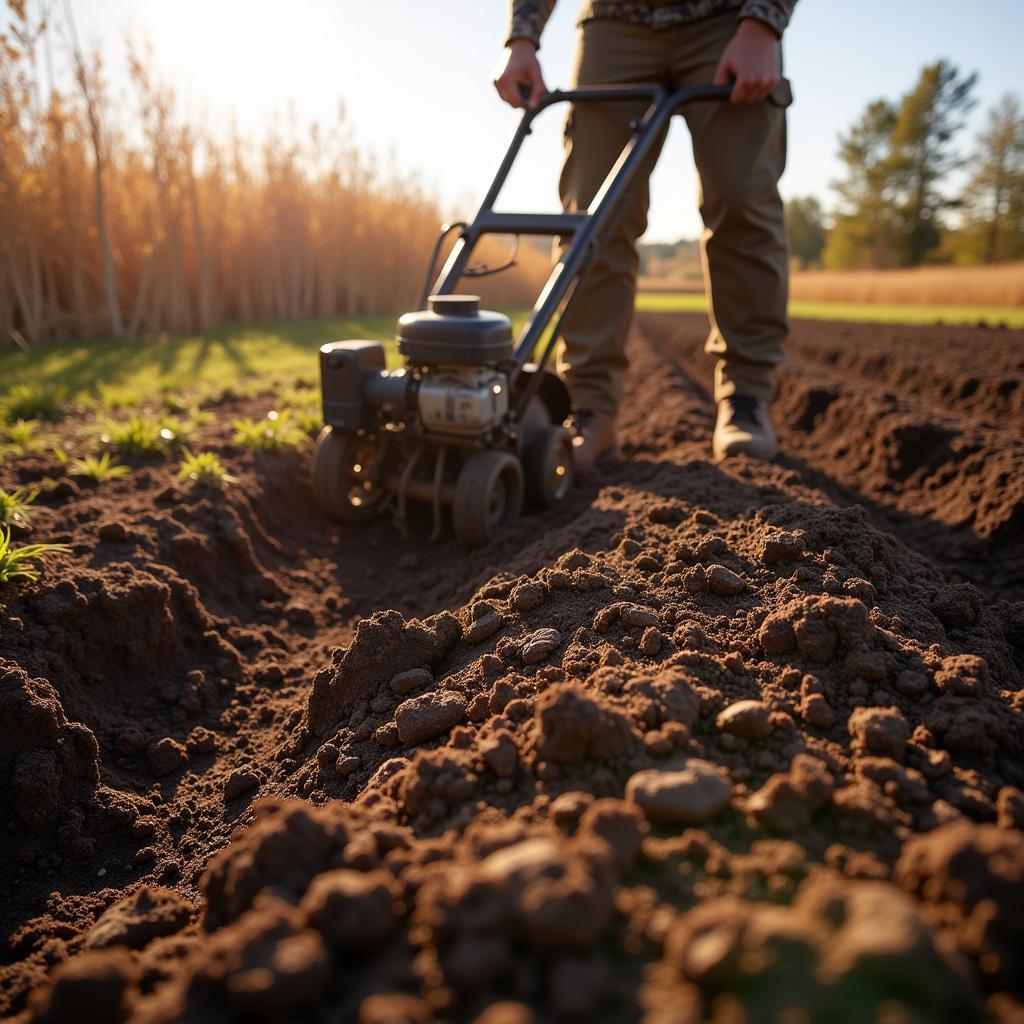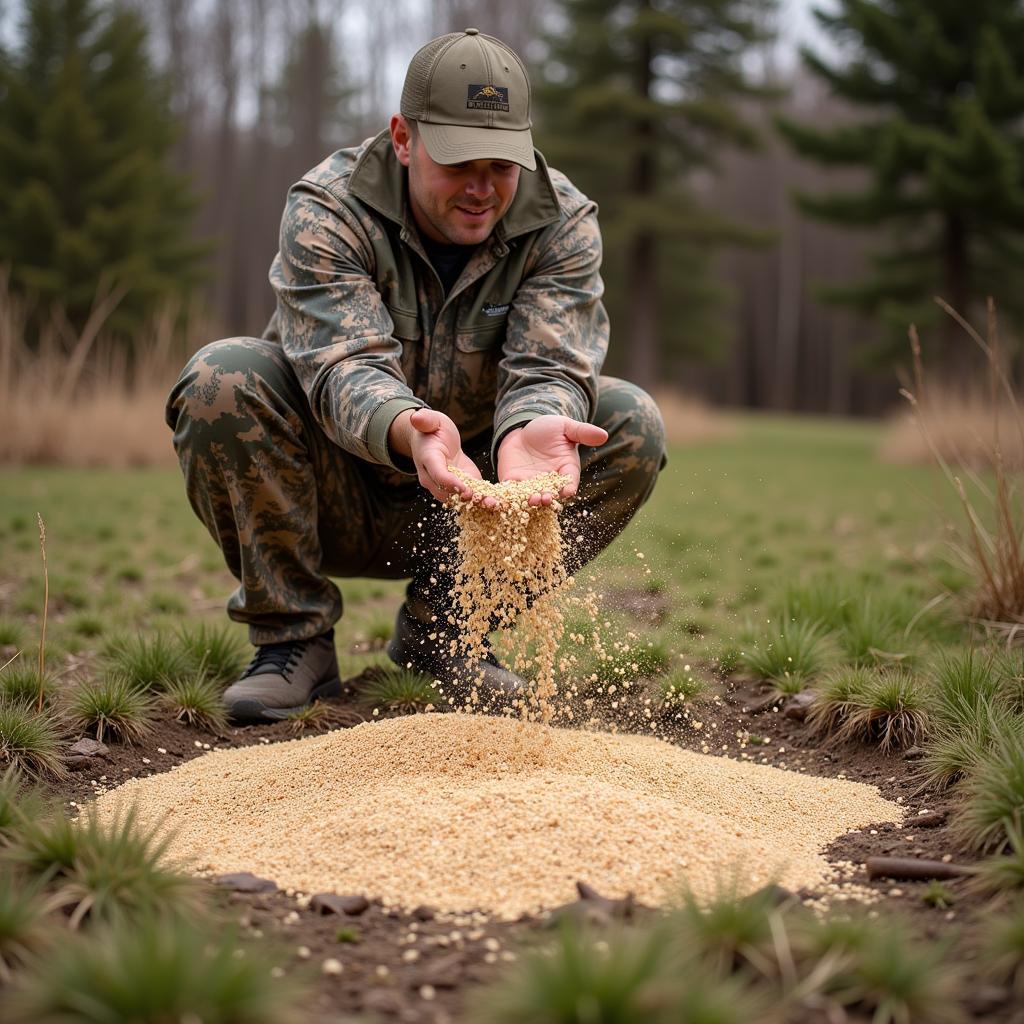Oats Food Plot is a popular choice among hunters looking to attract deer. These plots offer a nutritious and attractive food source, especially during the fall and early winter. But establishing a thriving oats food plot isn’t as simple as scattering seeds. It requires careful planning, proper soil preparation, and ongoing maintenance to ensure it’s a magnet for deer throughout the hunting season. Let’s delve into the intricacies of creating the perfect oats food plot.
Why Choose Oats for Your Food Plot?
Oats offer several advantages as a food plot choice. They’re relatively quick to establish, providing a fast-growing food source that can attract deer within weeks of planting. Their high protein content makes them particularly appealing to deer during the fall, when they’re trying to bulk up for the winter. Plus, oats are a cool-season crop, thriving in the milder temperatures of fall and early winter. This makes them an excellent option for extending the hunting season and providing late-season forage. For those interested in late-season options, check out our guide on late season deer food plot.
Choosing the right oat variety is crucial for a successful food plot. Consider factors like your local climate, soil conditions, and the specific needs of the deer population in your area. Some varieties are better suited for colder climates, while others are more drought-tolerant. Researching oats for deer food plots will help you choose the right type for your location.
Preparing the Soil for Your Oats Food Plot
Soil preparation is the foundation of a healthy and productive oats food plot. Before planting, conduct a soil test to determine its pH level and nutrient content. Oats thrive in slightly acidic soil with a pH between 6.0 and 6.5. If your soil is too acidic or alkaline, you’ll need to amend it accordingly. This might involve adding lime to raise the pH or sulfur to lower it. Proper soil pH ensures that oats can effectively absorb the nutrients they need for optimal growth. You’ll also want to address any nutrient deficiencies revealed by your soil test.
Next, clear the area of any existing vegetation. This can be done using herbicides, tilling, or a combination of both. Tilling helps to break up compacted soil, improving drainage and allowing for better root development. After clearing the area, work the soil to a fine seedbed. This creates a smooth, even surface that promotes good seed-to-soil contact, crucial for germination.
 Preparing the Soil for an Oats Food Plot
Preparing the Soil for an Oats Food Plot
Planting and Maintaining Your Oats Food Plot
Once your soil is prepared, it’s time to plant your oats. The ideal planting time for oats is typically in late summer or early fall, depending on your local climate. Broadcast seeding is a common method for planting oats food plots. This involves evenly spreading the seeds over the prepared seedbed. After seeding, lightly rake the area to cover the seeds with a thin layer of soil. This helps to protect the seeds from birds and other animals and promotes better germination.
Maintaining your oats food plot is essential for its long-term success. Regular monitoring for weeds is crucial. Weeds compete with oats for nutrients and water, hindering their growth. If weeds become a problem, consider using a selective herbicide that targets broadleaf weeds without harming the oats. Also, monitor soil moisture levels, especially during dry periods. Supplemental watering might be necessary to ensure the oats continue to thrive.
 Planting Oats for Deer Attraction
Planting Oats for Deer Attraction
Maximizing the Attractiveness of Your Oats Food Plot
To maximize the attractiveness of your oats food plot, consider incorporating other plants that complement oats. Clover, for instance, is a nitrogen-fixing legume that can improve soil health and provide additional forage for deer. Brassicas, such as turnips or radishes, are another good option, offering late-season forage and attracting deer with their pungent aroma. Creating a mixed food plot with a variety of plants can provide a more diverse and nutritious food source, further enhancing its appeal to deer. Learn more about other forage options with our guide on forage oats food plot.
Common Oats Food Plot Mistakes to Avoid
One common mistake is planting oats too late in the season. This can result in poor growth and reduced forage availability during the hunting season. Another mistake is neglecting soil preparation. Proper soil pH and nutrient levels are essential for healthy oat growth. Finally, failing to control weeds can significantly impact the success of your oats food plot. Weeds compete with oats for resources, reducing their yield and attractiveness to deer. Avoid these common pitfalls to ensure a thriving oats food plot that attracts deer throughout the season. For those specifically focused on deer, see our guide about oats for food plots.
 A Successful Oats Food Plot Attracting Deer
A Successful Oats Food Plot Attracting Deer
Conclusion
An oats food plot can be a highly effective way to attract deer to your hunting area. By following the steps outlined in this guide, from soil preparation to ongoing maintenance, you can create a thriving oats food plot that provides a nutritious and attractive food source for deer throughout the hunting season. Remember the importance of proper soil preparation, selecting the right oat variety, and ongoing maintenance to ensure a successful and productive plot. Check out our resources on oats for a deer food plot for more in-depth information.
FAQ
- When is the best time to plant oats for a food plot? Late summer or early fall is typically the ideal time.
- What type of soil do oats prefer? Slightly acidic soil with a pH between 6.0 and 6.5.
- How do I control weeds in my oats food plot? Use a selective herbicide or hand-pull weeds regularly.
- Can I plant other plants with oats in my food plot? Yes, clover and brassicas are excellent companion plants.
- How often should I water my oats food plot? Water as needed, especially during dry periods.
- What are the benefits of using oats for a food plot? Oats are nutritious, fast-growing, and attractive to deer.
- How deep should I plant oat seeds? Lightly cover the seeds with a thin layer of soil, approximately 1/4 to 1/2 inch.
Need assistance? Contact us at Phone: 02437655121, Email: minacones@gmail.com or visit us at 3PGH+8R9, ĐT70A, thôn Trung, Bắc Từ Liêm, Hà Nội, Việt Nam. We have a 24/7 customer service team.